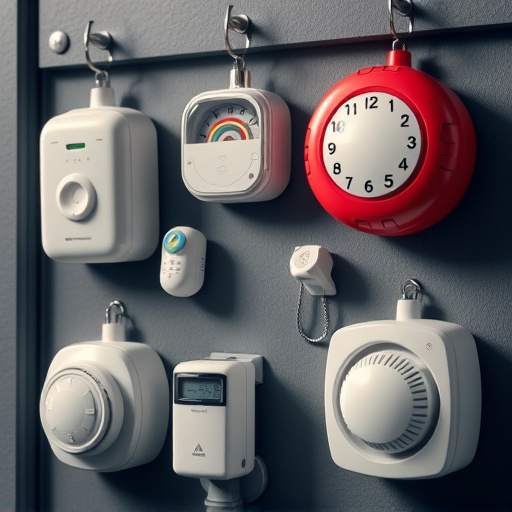Personal protection sirens, crucial tools for outdoor enthusiasts, offer maximum decibel personal alarm safety in remote or dangerous locations. With loudness exceeding 100 dB, these compact devices deter hazards and attract attention during emergencies. When selecting a personal alarm, prioritize durability, water resistance, wireless connectivity, and long-lasting batteries. Best practices include understanding the device's maximum decibel, familiarizing with activation mechanisms, and placing it at chest height for optimal projection. Legally and ethically, users must adhere to regional decibel limits (up to 120 dB) and use these devices responsibly for emergencies and self-defense.
Personal protection sirens, or maximum decibel personal alarms, are essential tools for outdoor enthusiasts navigating remote landscapes. In cases of emergency, these compact devices offer a powerful, attention-grabbing solution, enhancing safety during hiking, camping, and other adventures. This article explores the importance of personal alarm safety, delves into key features to look for in maximum decibel alarms, provides best practices for outdoor use, and discusses legal considerations for carrying such protection.
- Understanding the Importance of Personal Protection Sirens
- Key Features to Consider in Maximum Decibel Personal Alarms
- Best Practices for Using Personal Alarm Safety During Outdoor Adventures
- Legal and Ethical Considerations for Carrying Personal Protection Devices
Understanding the Importance of Personal Protection Sirens
Personal protection sirens, also known as personal alarm systems, have become essential tools for outdoor enthusiasts and adventurers. In remote or potentially dangerous locations, these devices offer a powerful means of ensuring maximum decibel personal alarm safety. With the ability to emit loud, piercing sounds, they serve as a reliable warning system against potential threats such as wild animals, unexpected weather changes, or even hostile encounters.
The importance lies in their compact size and portability, allowing users to carry them conveniently during hikes, camping trips, or exploration adventures. Unlike traditional sirens that are stationary, these personal protection devices provide mobility, enabling individuals to protect themselves effectively while on the move. By activating the siren, a user can signal for help, deter potential hazards, and attract attention in emergencies, thus enhancing overall safety outdoors.
Key Features to Consider in Maximum Decibel Personal Alarms
When choosing a maximum decibel personal alarm for outdoor activities, several key features should be top of mind to ensure optimal safety. First and foremost, the alarm’s loudness, measured in decibels (dB), is paramount. A high dB rating, typically above 100, ensures your alert will cut through environmental noise, especially during intense outdoor scenarios like hiking or camping. This powerful sound acts as a potent deterrent to potential threats, drawing attention and signaling danger swiftly.
Additionally, durability and water resistance are crucial considerations for outdoor use. Your alarm should withstand harsh conditions, including exposure to rain, snow, or extreme temperatures, without compromising performance. A robust build quality guarantees reliability in critical situations. Wireless connectivity and long-lasting batteries further enhance practicality, allowing for easy portability and continuous protection during your adventures.
Best Practices for Using Personal Alarm Safety During Outdoor Adventures
When using personal alarm safety devices during outdoor activities, it’s crucial to follow best practices for optimal effectiveness. Start by understanding the device’s maximum decibel level; high-decibel alarms are more likely to deter potential threats and attract attention. Ensure you’re familiar with the alarm’s activation mechanism – whether it’s a simple button press or a motion sensor – and practice its use regularly, especially in simulated emergency scenarios.
Placement is key; hold the device at chest height for maximum projection of sound. Keep it readily accessible, like in a belt pouch or backpack, so you can activate it quickly when needed. Remember, personal alarm safety isn’t just about loud noise; it’s also about drawing attention to your location. Use these devices strategically, especially when venturing into remote areas or during low-light conditions, to increase your chances of rescue should an emergency arise.
Legal and Ethical Considerations for Carrying Personal Protection Devices
Carrying personal protection devices, such as sirens for outdoor activities, comes with a range of legal and ethical considerations. The primary concern revolves around public safety and the potential misuse of these high-decibel personal alarms. Many regions have specific laws governing the use of personal safety devices, particularly regarding maximum decibel levels. Exceeding these limits can cause distress to others and potentially lead to legal repercussions. For instance, in some areas, personal alarms cannot exceed 120 decibels to avoid disturbing neighbors or causing harm to wildlife.
Ethically, the responsible use of such devices requires users to consider their surroundings and potential impact. It’s essential to understand that these sirens are intended for emergencies and self-defense scenarios, not as a means of harassment or disruption. Users must act responsibly, ensuring they only activate alarms when necessary, and being mindful of nearby individuals, animals, and the environment to avoid unnecessary distress.
Personal protection sirens, or maximum decibel personal alarms, are invaluable tools for outdoor enthusiasts. By understanding key features, best practices, and legal considerations, you can enhance your safety during adventures. These high-decibel devices serve as a powerful deterrent against potential threats, offering peace of mind in remote areas. Always ensure proper usage and stay informed about local regulations regarding personal protection devices to fully leverage their benefits.
